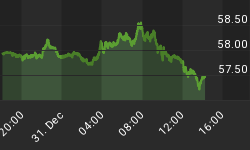Are the 'old economy' stocks safer than the high flying 'new economy' issues?
Look back more than one hundred years to see how stocks fared as America expanded towards the twentieth century and a new economy.
The railways, the country's largest corporations, powered the American economy in the late 19th century. Assembled in 1884, the Dow Jones Rails Average is the oldest U.S. stock Index and the predecessor to the Dow Jones Transportation Average. The Index consisted of twenty companies, eighteen of which were rails. Union Pacific is the only surviving member of original Rails Average.
As America became more industrialized, the first Dow Jones Industrial Average was published twelve years later in 1896. This original twelve stock Index was joined by a new Industrials Average in 1915 consisting of twenty stocks. The old Index was discontinued in 1916 and in 1928 the number of stocks in the Industrial Average was raised to thirty. General Electric is the only surviving member of the original Industrial Average.
There was rampant speculation in the Dow Industrial stocks as they became an ever-increasing part of the new economy. We know that the stock market crashed in October 1929 and after a short lived recovery continued on a bear market that ended in July 1932. How did the new economy Industrials fare compared to the old economy Rails?
I have used data starting in 1921 as both the Rails and the Industrials completed post war bear markets in 1921; the Industrials in June and the Rails in August.
| INDUSTRIALS | RAILS | |
| 1921 Low | 63.90 | 65.52 |
| 1929 High | 381.17 | 189.11 |
| Gain | 596% | 290% |
| 1929 Crash Low | 198.69 | 128.07 |
| Loss | 48% | 32% |
| 1932 Bear Low | 41.22 | 13.23 |
| Loss from 1929 High | 89% | 93% |
| Loss from 1921 Low | 35.5% | 80% |
As we can see, panic caused the most damage to the speculative Industrials, but by the end of the bear market the damage was much greater to the old economy Rails. Where are they today? The Rails (Transportation Average) reached a high of 3783.50 in April 1999 for a gain of 286x from the bear market low; and the Industrials reached a high of 11,722.98 in January 2000 for a gain of 284x. Although the Rails' performance equalled the Industrials' from the 1932 low, they never regained the greater losses suffered in the bear market. The pundits of the day were correct, it was a new economy.
So how does this relate to today?
NASDAQ was formed in 1971 as the world's first electronic stock market and today is recognized as the new economy exchange. The Dow Jones Industrial Average stocks are recognized as the safe old economy stocks. I have used 1994 as the starting point for this number sequence. This is an arbitrary date since the current bull market started in 1974, but 1994 is the date that the bull started its final charge and there is general acceptance that something new and powerful is happening.
| NASDAQ | DOW INDUSTRIALS | |
| 1994 Low | 703.52 | 3,593.55 |
| 2000 High | 5,132.52 | 11,722.98 |
| Gain | 730% | 326% |
| Recent Low | 3,321.71 | 9796 |
| Loss | 35% | 16% |
The comparisons are intriguing. In both eras the new economy stocks performed much better to the upside than the old economy stocks and performed much worse in their initial breaks. Is history repeating itself? Bear markets take no prisoners and the fall from the highs will likely be as damaging to both markets in the end.
For a comprehensive explanation of Dow Theory and the relationship between the Industrials and Transports, visit DowTheoryLetters.com
















